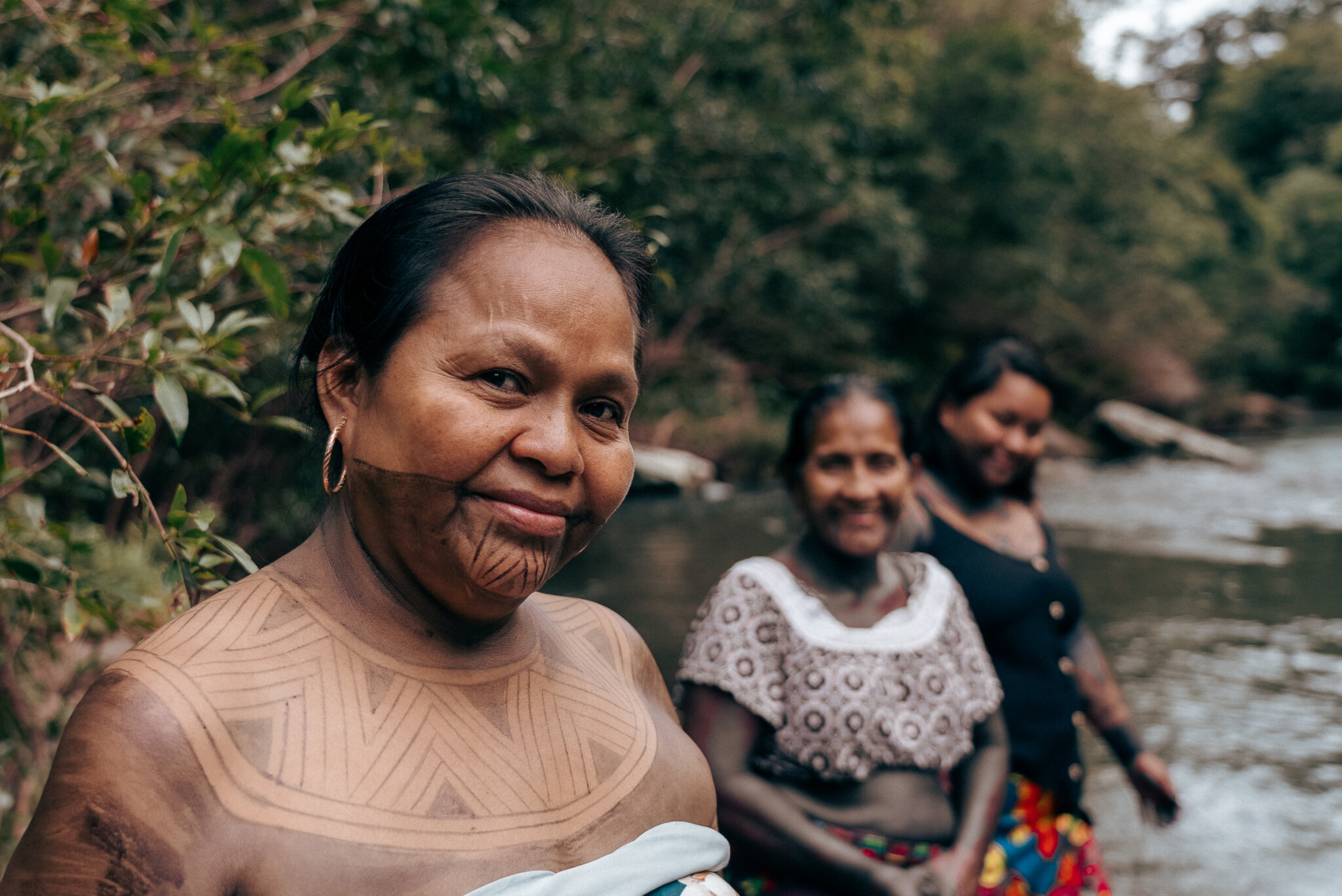
Read more
Related articles for further reading
Indigenous Peoples protect over 80% of the world’s biodiversity, whilst representing only 5% of the global population. Their invaluable knowledge and practices are true lessons of sustainable land management and equilibrium between species. Still, Indigenous Peoples are undervalued in their stewardship of nature and oftentimes persecuted. Despite being displaced from their lands and gradually pushed away from their ancestral traditions, the Embera People of Panama refuse to sever their connection with this land. Over the past three years, they have worked tirelessly to restore the forests in the Alto Bayano River area, their sacred land.
Since the 1970s, this region’s biodiversity has been impacted by the construction of a government-imposed hydroelectric dam and relentless pressure from cattle ranching and continued agricultural expansion. In 2020, a concerted effort led by AMARIE, an association dedicated to uniting female artisans from the Ipeti Embera communities, resulted in the planting of over 90,000 native species on 90 hectares of community land. They employ traditional knowledge and other natural climate solutions such as agroforestry to ensure the area’s restoration.
The association partners with Canada’s McGill University to run a plant nursery and further encourage other local communities to reconnect with their forests and participate in carbon credit projects.
In fact, combining different strategies such as avoided forest conversion, reforestation and agroforestry to protect Panama’s forest land can sequester over 21 metric tonnes of carbon emissions per year while providing economic support to local communities through the sale of carbon credits, as indicated by new data compiled by the naturebase platform. During the COVID-19 pandemic, 29 families from the Alto Bayano area sustained their livelihoods through carbon credits generated by their forest restoration efforts. This demonstrates one out of many ways that ancestral knowledge can be rewarded for the benefit of communities and the planet.
“We also reforest exclusively with species closely linked to our culture, such as the jagua, chunga, nahuala, cocobolo, and other woods. The plan is to recover the forest and our culture at the same time”, explains Elio Cunampio, a traditional Emberal painter. “Perhaps the next generation can reconnect with the forest, with this culture, and return to the origin, something pure and worth preserving”.
Nature in action series
Naturebase features real-world stories like this, focusing on people’s experiences as they successfully protect, restore, and sustainably manage their lands across different countries and regions to inspire climate ambition. Additionally, the platform hosts a growing natural climate solutions learning network designed to field-test and evaluate high-impact strategies that can be scaled and replicated worldwide. In doing so, naturebase not only helps stakeholders tackle the challenge of data integration and accessibility but also enables informed decision-making on the implementation of effective natural climate solutions worldwide.
The Nature in Action series, produced in collaboration with community-led filmmakers from If Not Us Then Who, tells stories of people and communities leading the groundwork on nature protection and recovery, highlighting successful nature-based solutions and strong Indigenous and local communities’ leadership that successfully link science, policy and action to positively influence on climate discussions and decision-making for high impact nature-based action. See all the films here.
About naturebase
Naturebase is the first online platform that uses science-based data and information to help individuals translate natural climate solutions planning into tangible actions that yield results. A collaborative effort involving people from 59 universities, 21 research institutions, 18 NGOs, and 12 government agencies worldwide, naturebase showcases pathways to protect, better manage, and restore nature for measurable climate benefits.